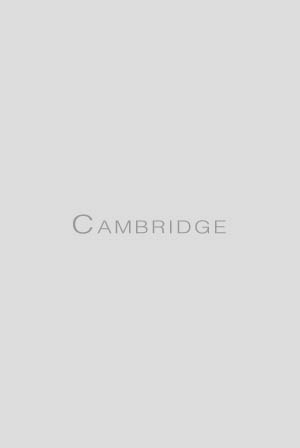Article contents
English Solo Song, c. 1710–1760
Published online by Cambridge University Press: 01 January 1968
Extract
For most of us, singer and musicologist alike, English song from the death of Purcell to the Victorian ‘renaissance’ nearly two centuries later is represented by a few of the Shakespearean settings of Arne, and a small handful of such perennial favourites as Leveridge's ‘Black-ey'd Susan’, Boyce's ‘Heart of Oak’, Dibdin's ‘Tom Bowling’, and Horn's once-ubiquitous ‘Cherry ripe’. As for our knowledge of the cultural environment in which such pieces naturally have their place, that is generally more limited still. Though theatrical in origin, we may take as typical of the sort of vocal melody which was popular with early Georgian audiences, Arne's charming ‘O come, o come, my dearest’ from The Fall of Phaeton (1736). If we agree, with Ernest Walker, that such a song is, in its way, ‘a sparkling polished little gem’, then it may be fairly maintained that English song during the first half of the eighteenth century is a veritable treasure trove of delightful music—none of it very ‘great’, certainly, but much of it worthy of a better fate than the oblivion to which it has been carelessly consigned.
- Type
- Research Article
- Information
- Copyright
- Copyright © 1969 The Royal Musical Association and the Authors
References
1 A History of Music in England, Oxford, 1907, p. 225.Google Scholar
2 See particularly Warwick Wroth, The London Pleasure Gardens of the Eighteenth Century, London, 1896 and Mollie Sands, Invitation to Ranelagh, 1742–1803, London, 1946.Google Scholar
3 See F. Cunningham Woods, ‘A Consideration of the Various Types of Songs Popular in England During the Eighteenth Century’, Proceedings of the Musical Association, xxiii (1896–7), 37–55.CrossRefGoogle Scholar
4 That honour would seem to belong to John Hullah's 58 English Songs by Composers chiefly of the Seventeenth and Eigteenth [sic] Century, Offenbach, [1871].Google Scholar
5 English Songs of the Georgian Period, ed. A. Moffat & F. Kidson, London, [1911].Google Scholar
6 A. Hyatt King, ‘The Music Room of the British Museum 1753–1953’, Proceedings of the Royal Musical Association, lxxix (1952–3), 68.CrossRefGoogle Scholar
7 I am indebted to Mr. Harding for kindly answering several queries about material in his possession.Google Scholar
8 Cf. Charles Avison, An Essay on Musical Expression, 2nd edn., London, 1753. P. 95.Google Scholar
9 On Hawkins's authorship of the Preface and text of Stanley's Six Cantata's, see Scholes, P. A., The Life and Activities of Sir John Hawkins, London, 1953, PP. 265–6.Google Scholar
10 See Dart, Thurston, ‘Rôle de la danse dans l’ “ayre” anglais’, Musique et paésie au XVIe siècle, Paris, 1954, pp. 203–8.Google Scholar
11 Cf. Claude M. Simpson, The British Broadside Ballad and Its Music, New Brunswick, N.J., 1966, p. x.Google Scholar
12 Pp. [i–ii]; the rest of the Introduction is devoted to a consideration of nine common-sense ‘rules’ for the performance of songs in polite company.Google Scholar
13 ‘A Criticism on Song-Writing’, prefixed to the first volume of The Hive. A Collection Of the most celebrated Songs Of our best English Poets, 3rd edn., London, 1726, p. ii.Google Scholar
14 See, for example, Mollie Sands, Invitation to Ranelagh, p. 9.Google Scholar
15 An Essay on Musical Expression, p. 82.Google Scholar
16 ‘A Study of Old English Song and Popular Melody Prior to the 19th Century’, The Musical Quarterly, i (1915), 575.Google Scholar
17 Edinburgh, 1793.Google Scholar
18 William Lawes, London, 1960, p. 158.Google Scholar
19 ‘English Cavalier Songs, 1620–1660’, Proceedings of the Royal Musical Association, lxxxvi (1959–60), 74–75.Google Scholar
20 Recorded by April Cantelo and Raymond Leppard on OL 50205 (Eighteenth Century Shakespearean Songs), London, 1961.Google Scholar
21 John Wilson, Roger North on Music, London, 1959, p. 307.Google Scholar
22 Cf. Avison, op. cit., pp. 68–69; also John Brown, A Dissertation on the Rise, Union, and Power … of Poetry and Music, London, 1763, pp. 219–20.Google Scholar
23 For a detailed study, see Boyd, Malcolm, ‘English secular Cantatas in the eighteenth Century’, The Music Review, xxx (1969), 85–97.Google Scholar
24 Op. cit., p. 83.Google Scholar
25 Ernest Warburton, ‘J. C. Bach's Operas’, Proceedings of the Royal Musical Association, xcii (1965–6), 96–97.Google Scholar
26 See the air ‘Maria come with all thy heav'nly charms’, from the third cantata of Boyce's Lyra Britannica, iii [c.1749], 42–44.Google Scholar
27 See Dent, E. J., Alessandro Scarlatti, London, 1905 & 1960, pp. 12, 21–22 and 81–86.Google Scholar
28 Handel's Dramatic Oratorios and Masques, London, 1959, p. 68.Google Scholar
29 Ibid., p. 535.Google Scholar
30 The Orchestra in England, London, 1946, p. 61.CrossRefGoogle Scholar
The following specially recorded illustrations were played during the course of the lecture:Google Scholar
- a
a T. A. Arne: ‘O come, o come, my dearest’ from The Fall of Phaeton (1736).
- b
b ‘If it does not rain tomorrow’, ‘A New Song … by an Outalian’.
- c
c Henry Carey: ‘Young Philoret and Celia met in an old shady grove’.
- d
d William Boyce: ‘As Thyrsis reclins'd by her side he lov'd best’, from Lyra Britamica.
- e
e Maurice Greene: ‘Sweet Annie fra the sea beach came’, The Chaplet (1738), pp- 24-26.
- f
f Ignaz Pleyel's arrangement of Greene's ‘Sweet Annie’; the violin part (not printed by Thomson) may be found in Fleyel's autograph ‘full’ score: British Museum, Add. MS 35276, ff. 17v–18.
- g
g William Croft: ‘My heart is ev'ry beauty's prey’.
- h
h Maurice Greene: ‘The rolling wheele that runneth often round’, from Spenser's Amoretti.
- i
i John Stanley: Air, ‘By heav'n I'll stoop no more, not I’, from No. 4 of the second set of Six Cantata's For a Voice and Instruments.
The author wishes to thank Lyn Parkyns (soprano) and David Johnston (tenor) who performed the musical examples, and John Southall who made the recordings; also Ruth Ellis (violin), Philip Claringbull (violin) and Jonathan Palmer (cello), three music students at Reading University, for assistance with the accompaniments.Google Scholar
- 1
- Cited by


